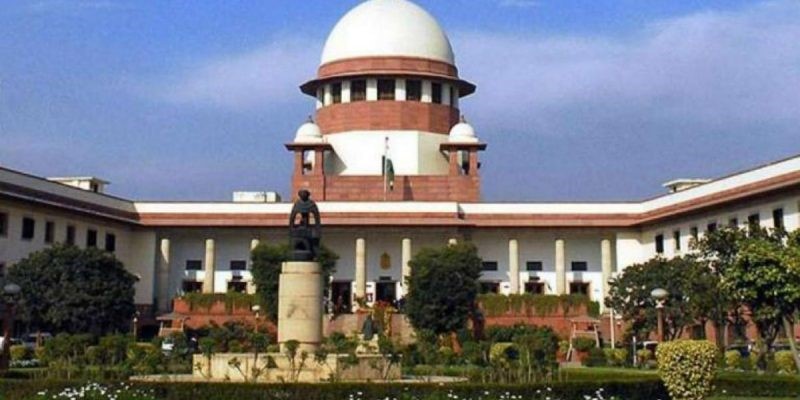Description

Disclaimer: Copyright infringement not intended.
Context
- The Supreme Court of India has held that the people have a right to be free from the adverse effects of climate change within the ambit of fundamental rights, according to a judgment uploaded on April 6, 2024.
M K Ranjitsinh & Ors versus Union of India & Ors
- The judgment was regarding the protection of critically endangered bird species on the IUCN Red List – the great Indian bustard (GIB).
- The Court in its April 6 judgment placed its reliance on several reports by the Wildlife Institute of India identifying 13,663 square kilometers as the “priority area”; 80,680 square kilometers as “potential areas”; and 6,654 square kilometers as “additional important areas” for the GIB.
- The Court also attributed the decline of the species’ population to overhead transmission lines.
- High voltage power lines crisscross their flying path and lead to high rates of GIB mortality in both these States.
- SC order said that there is no basis to place a blanket direction for undergrounding high voltage and low voltage power lines in a vast area of about 99,000 square kilometers due to issues of higher transmission costs, transmission and distribution losses, etc.
- The court has now observed that solar power is required to meet the country’s growing energy demands.
Constitutional provisions related to the right to a clean environment
- Article 48A of the Constitution provides that the State shall endeavor to protect and improve the environment and safeguard the forests and wildlife of the country.
- Clause (g) of Article 51A stipulates that it shall be the duty of every citizen of India to protect and improve the natural environment including forests, lakes, rivers, and wildlife, and to have compassion for living creatures.
- The right to a clean environment has earlier been recognized as a fundamental right within the ambit of the right to life by the Court in a plethora of decisions.
The Court has also constituted an Expert Committee whose remit is to:
- Determine the scope, feasibility, and extent of overhead and underground electric lines in the area identified as priority areas;
- Facilitate conservation and protection measures for GIB as well as other fauna specific to the topography;
- Evaluate potential consequences of climate change on GIB habitats, considering factors such as shifting precipitation patterns, extreme temperatures, habitat degradation, and developing adaptive management strategies to enhance their resilience;
- Ascertain suitable ways to lay down power lines;
- Engage with relevant stakeholders, including government agencies, environmental organizations, wildlife biologists, local communities, and energy industry representatives;
- Review international best practices for conservation of similar species such as the Houbara Bustard in the Middle East or the Black Stilt in New Zealand;
- Implement a robust monitoring and research program to track GIB populations, habitat dynamics, and the effectiveness of conservation measures over time; and
- Adopt any additional measures including the installation of high-quality bird diverters by the parameters laid down by the Central Electricity Authority.

Issues of conservation of great Indian bustard
The great Indian bustard (GIB)
- About the Great Indian Bustard: The Great Indian Bustard (Ardeotis nigriceps), is the State bird of Rajasthan. They inhabit dry grasslands and scrublands on the Indian subcontinent.
- Habitat: It is endemic to the Indian subcontinent. It is found in Rajasthan (Desert National Park), Gujarat, Madhya Pradesh, Karnataka, and Andhra Pradesh in India and parts of Pakistan.
Conservation Status:
- IUCN Red List: It is a Critically Endangered species with less than 150 birds left in the wild.
- CITES: Appendix I
- Convention on Migratory Species (CMS): Appendix I
- Wildlife (Protection) Act,1972: Schedule I
Threats of GIB
- The bird is under constant threats due to collision/electrocution with power transmission lines, hunting (still prevalent in Pakistan), habitat loss and alteration as a result of widespread agricultural expansion, etc.
- GIBs are a slow-reproducing species. They lay a few eggs and have almost a year-long parental care of chicks. The GIB achieves maturity in around 3-4 years.
Steps Taken to Conserve the GIB
- Species Recovery Programme:
- GIBs are kept under the species recovery program under the Integrated Development of Wildlife Habitats of the Ministry of Environment, Forests and Climate Change (MoEFCC).
- Artificial Hatching:
- Eggs from the wild and they are artificially hatched. The first chick hatched in June 2019 was named ‘Uno’.
- National Bustard Recovery Plans:
- It is currently being implemented by government’s conservation agencies.
- Conservation Breeding Facility:
- The Ministry of Environment, Forest and Climate Change, the Rajasthan government, and the Wildlife Institute of India (WII) have also established a conservation breeding facility in Desert National Park in Rajasthan.
- Project Great Indian Bustard:
- To conserve the remaining population of critically endangered Great Indian Bustard Ardeotis nigriceps, locally called Godawan, an ambitious conservation program namely, Project Great Indian Bustard, was launched by the Rajasthan Government. It was started to construct breeding enclosures for the species and develop infrastructure to reduce human pressure on its habitats.
Source: https://www.downtoearth.org.in/news/governance/analysis-what-does-the-new-supreme-court-judgment-mean-for-climate-action-in-india--95462
|
PRACTICE QUESTION
Q. What are the key challenges hindering effective global climate action, and what strategies should be adopted by countries to enhance international cooperation and accelerate progress towards mitigating climate change? ( 250 words)
|











